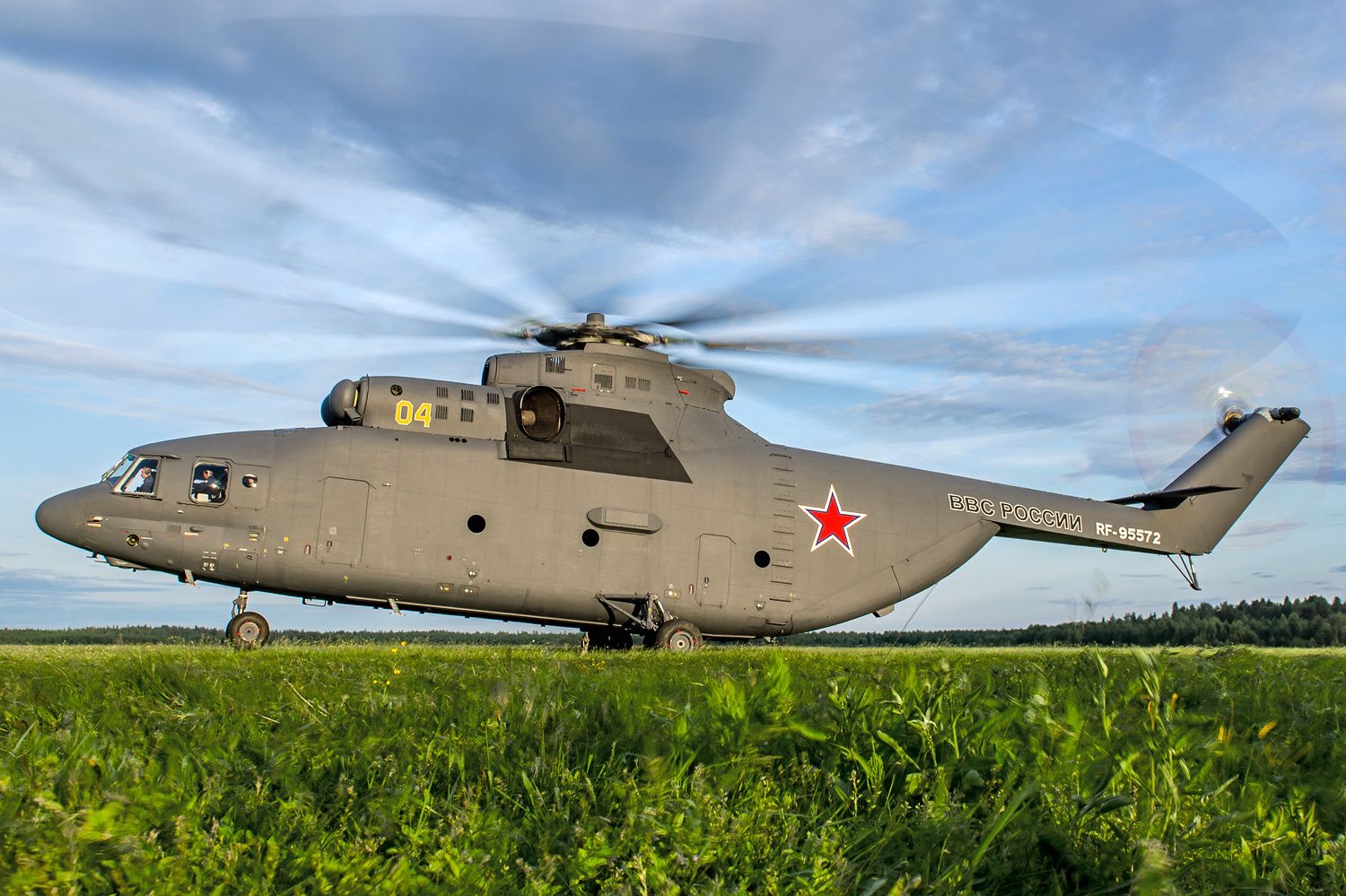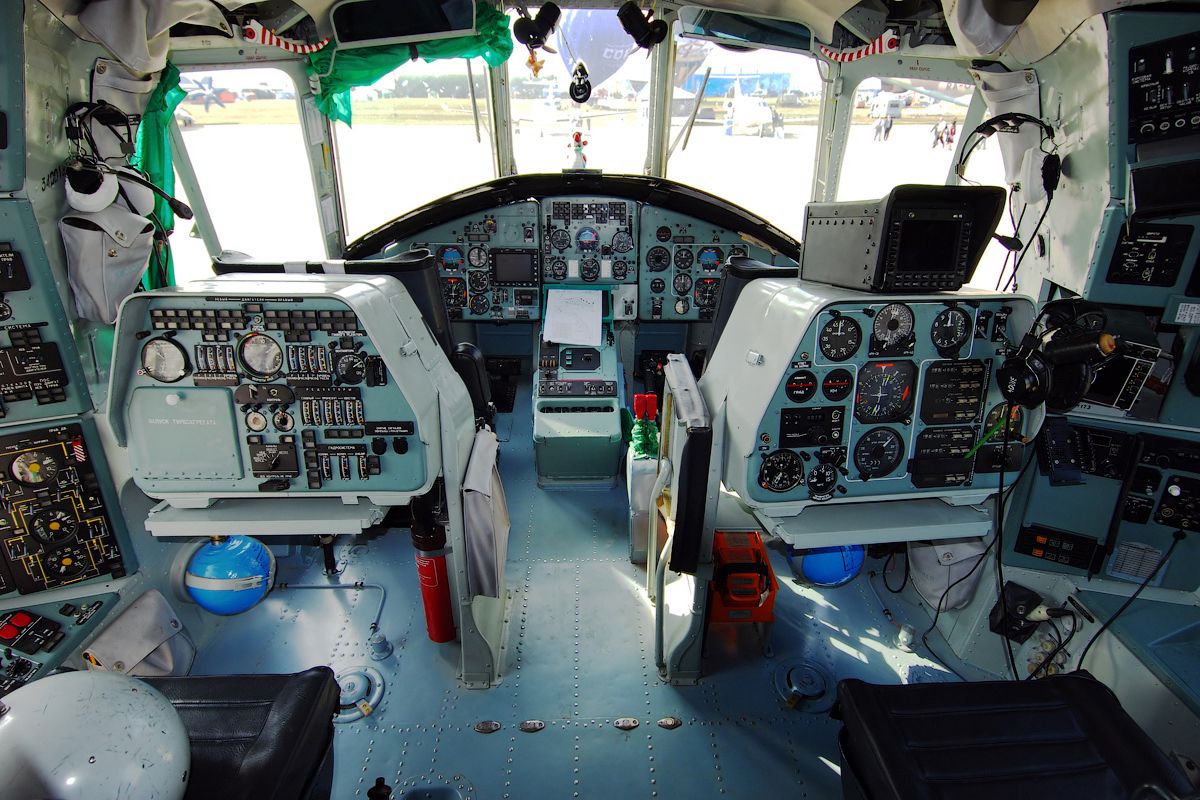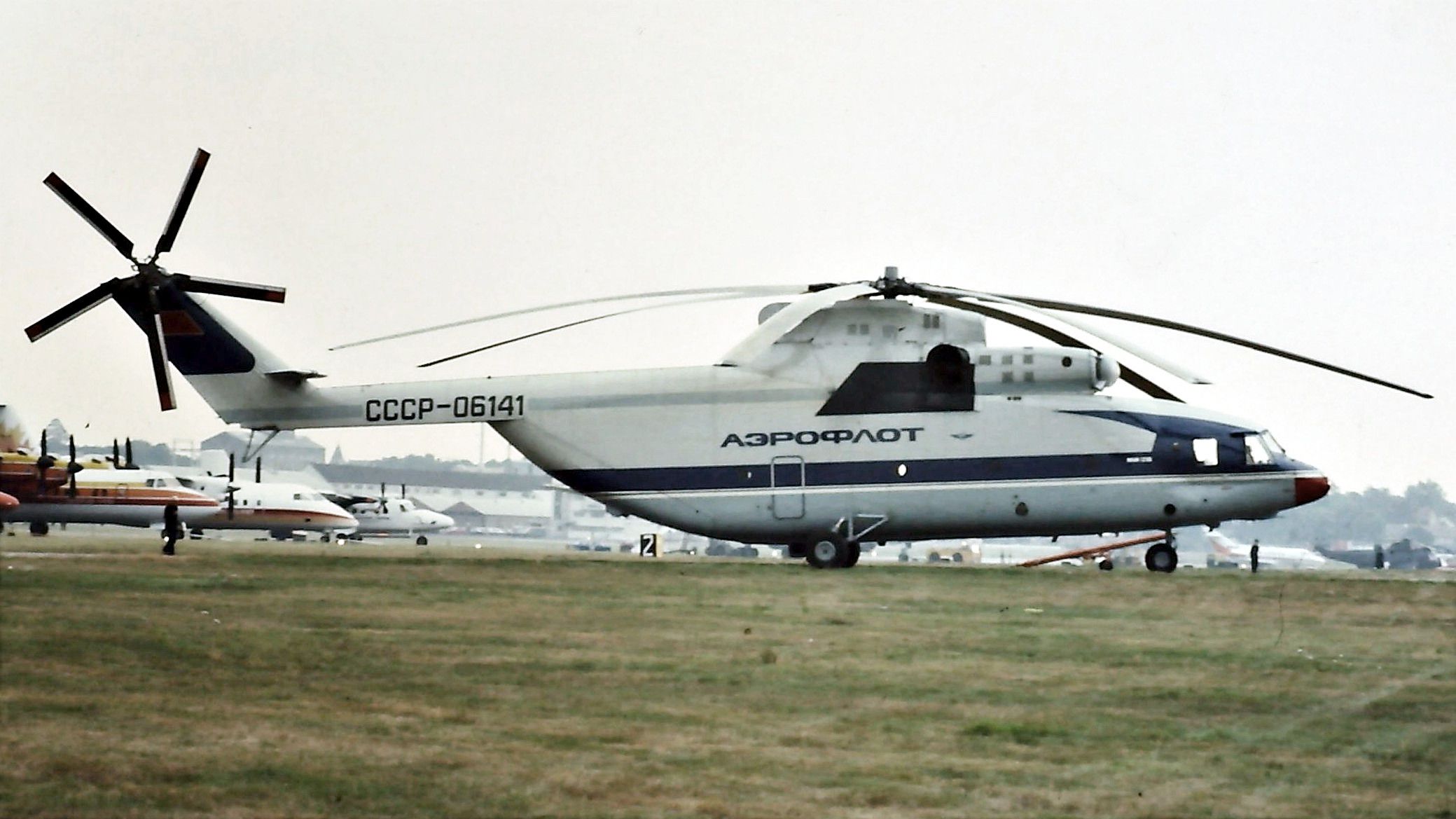Exactly 45 years ago today, on December 14, 1977, the Soviet Union's massive Mil Mi-26 helicopter flew for the first time. In the early 1960s, the Soviet Union sought to build a helicopter with the same capacity as a four-engined Antonov An-22 turboprop. Unlike the massive Antonov, the helicopter did not need a runway, making it ideal for working in remote locations.
Big enough to carry intercontinental ballistic missiles, engineers first looked at designs similar to Boeing's twin main rotor CH-47 Chinook. In the end, the complications of the front and rear rotors proved too difficult, and they dropped the idea in favor of twin wing-mounted rotors somewhat similar to the Bell Boeing V-22 Osprey.
The prototype of the Mil V-12 flew in 1968, but by the time it was ready to go into production, the Soviet Union no longer needed a large helicopter to transport its missiles, marking the end of the project.
The Soviet military still needed a heavy-lift helicopter
Even though the idea of a heavy-lift helicopter was dead, the Soviet Union's military still needed a helicopter that could carry military equipment. Moscow Aviation Institute graduate Marat Tishchenko drew up a new design. Unlike the Mil V-12, the new design featured a single, eight-blade main lift rotor.
Capable of carrying 44,000 pounds, the first production, Mil Mi-26, named "Halo" by NATO, rolled out of the factory on October 4, 1980. With a larger cargo hold than a Lockheed C-130 Hercules, the Mil Mi-26 made its western debut at the 1981 Paris Air Show. Development of the helicopter was completed by 1983, and by 1985 it was in service with the Soviet Union's military.
Variants of the Mil Mi-26 include the following helicopters:
Mi-26A
An upgraded military version with a new flight/navigation system that never went into production
Mi-26M
Upgraded version of the Mi-26 with better-performing ZMKB Progress D-127 engines
Mi-26T
A civil freight transport version
Mi-26TM
A flying crane version with an under-nose gondola for the crane operator
Mi-26TP
A firefighting version capable of carrying 4,000 gallons of fire retardant
Mi-26MS
A medical evacuation version of Mi-26T that can also be used as a field hospital
Mi-26P
A 63-seat passenger version.
Mi-26T2
An improved version of the Mi-26T that can fly day or night in good or bad weather
Mi-26T2V
The newest version of the helicopter with navigation and satellite communication capabilities. The Russians used this version of the helicopter during their invasion of Ukraine.
Specifications and general characteristics of the Mil Mi-26
- Crew: Two pilots, one navigator, one flight engineer, one flight technician
-
Capacity:
- 90 troops or 60 stretchers
- 44,000 lbs of cargo
- Length: 131 feet 4 inches
- Height: 26 feet 9 inches
- Empty weight: 62,170 lbs
- Gross weight: 109,349 lbs
- Max takeoff weight: 123,459 lbs
- Fuel capacity: 12000 liters
- Powerplant: 2 × ZMKB Progress D-136 turboshaft engines, 8,500 kW (11,400 hp) each
- Main rotor diameter: 105 ft 0 inches
- Main rotor area: 8,656.9 square feet
Performance
- Maximum speed: 183 mph
- Cruise speed: 158 mph
- Range: 310 miles with 17,000 lbs of cargo
- Service ceiling: 15,100 feet
In 1982 the Mi-26 set a world record for the greatest mass lifted by a helicopter when it carried 125,000 lbs over 6,500 feet. Still in production today, as of 2015, 316 Mi-26 helicopters have been built.
Get the latest aviation news straight to your inbox: Sign up for our newsletters today.



